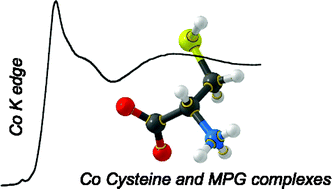XAS Investigation of biorelevant cobalt complexes in aqueous media
Abstract
Cobalt is an essential element of biological cycles involved in numerous metallobiomolecules, but it becomes a toxic element at high concentration or a radiotoxic element because of its use in the nuclear industry. “Molecular speciation” in biological media is an essential prerequisite to evaluate its chemical behaviour as well as its toxic or beneficial effects. In this scheme, we have focused on the coordination properties of the


 Please wait while we load your content...
Please wait while we load your content...